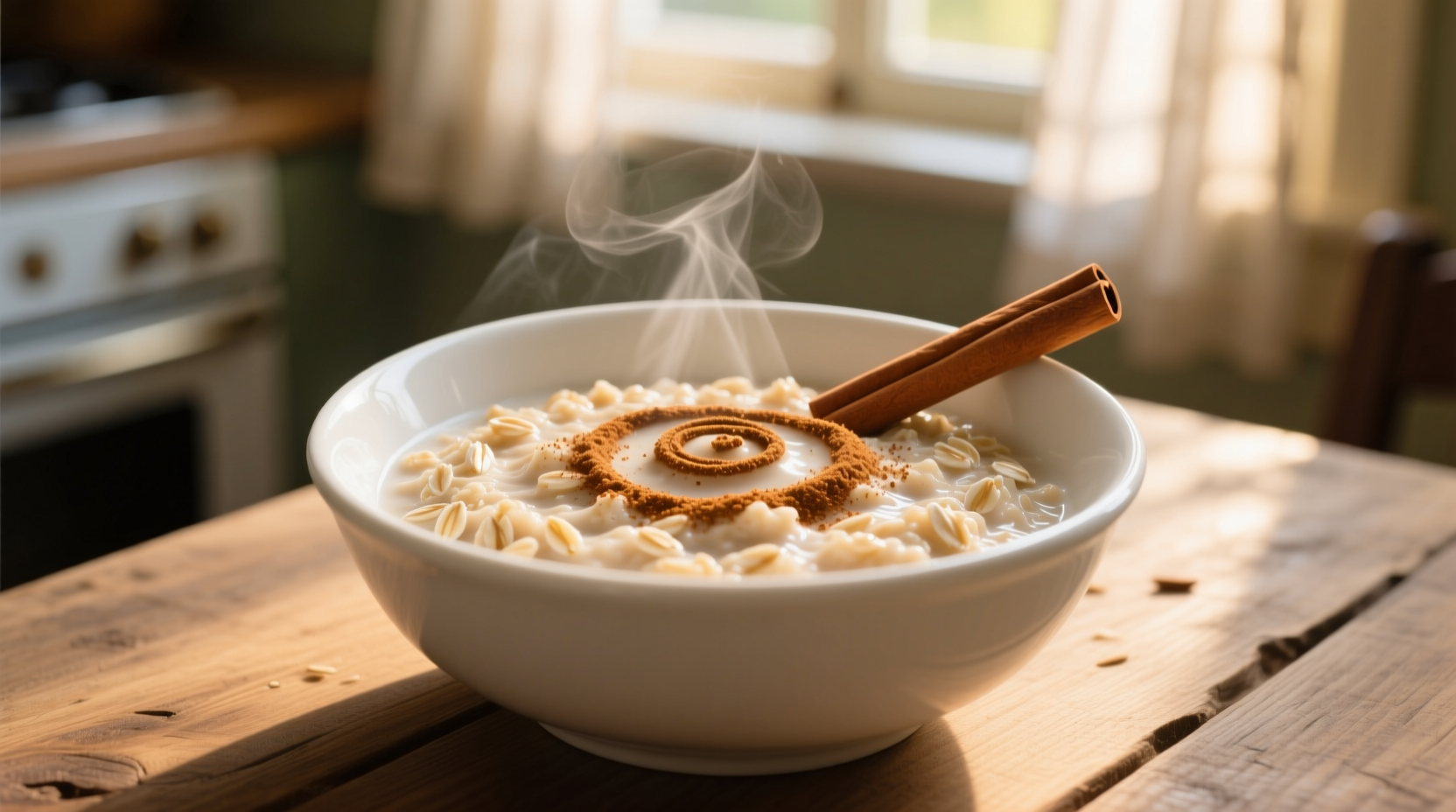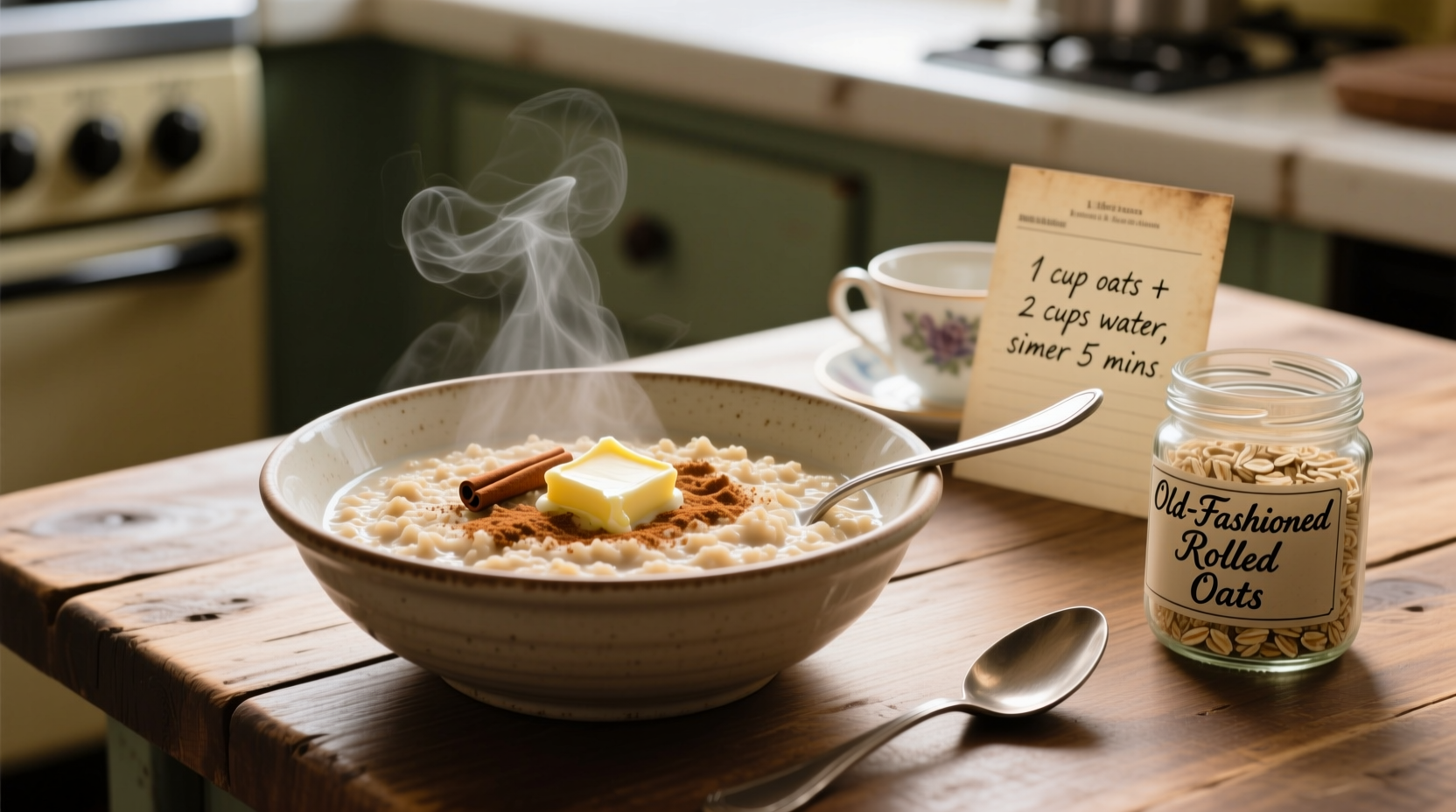Learn how to cook perfect old fashioned oatmeal with this simple 5-step method: Use a 2:1 water-to-oats ratio, bring to a gentle boil, simmer for 5 minutes while stirring occasionally, let rest covered for 2 minutes, and customize with your favorite toppings. This traditional preparation yields creamy, nutty-flavored oatmeal without additives or instant packets.
There's something deeply satisfying about a bowl of properly cooked old fashioned oatmeal. Unlike instant varieties loaded with sugar and artificial flavors, traditional rolled oats offer a wholesome, customizable breakfast that's been nourishing people for generations. In just 10 minutes, you can create a creamy, comforting meal that provides sustained energy and essential nutrients.
Why Old Fashioned Oats Deserve Your Attention
Old fashioned oats, also known as rolled oats, undergo minimal processing compared to quick or instant oats. They're steamed and rolled flat, preserving more of their natural fiber and complex carbohydrates. This simple preparation method creates a heartier texture and richer flavor profile that instant oats simply can't match.
| Oat Type | Processing Method | Cooking Time | Glycemic Index |
|---|---|---|---|
| Old Fashioned (Rolled) | Steamed and flattened | 5-7 minutes | 55 |
| Quick Cooking | Pre-cooked, cut smaller | 1-3 minutes | 66 |
| Instant | Pre-cooked, heavily processed | 30 seconds | 83 |
| Steel Cut | Chopped groats | 20-30 minutes | 42 |
According to USDA nutritional data, a single cup of cooked old fashioned oats contains 158 calories, 4 grams of fiber, and provides 19% of your daily manganese needs. The slower digestion rate of rolled oats compared to instant varieties helps maintain stable blood sugar levels throughout the morning.
Essential Tools and Ingredients
Before you begin cooking how to make old fashioned oatmeal, gather these simple items:
- Medium saucepan with heavy bottom (prevents scorching)
- Wooden spoon or heat-resistant spatula
- Measuring cups and spoons
- Pinch of salt (enhances natural flavor)
- 1 cup old fashioned rolled oats (not quick or instant)
- 2 cups liquid (water, milk, or combination)

Step-by-Step Cooking Process
Follow these precise steps for perfectly cooked old fashioned oatmeal every time:
- Measure accurately - Use a 2:1 liquid-to-oats ratio for ideal consistency. For creamier oatmeal, increase liquid by 1/4 cup.
- Heat liquid properly - Bring your chosen liquid to a gentle boil in a medium saucepan. Adding a pinch of salt enhances the natural nuttiness.
- Add oats gradually - Stir in oats slowly while the liquid is bubbling to prevent clumping.
- Simmer with attention - Reduce heat to low and simmer for 5 minutes, stirring occasionally. Old fashioned oats cooking time is critical - too short yields chalky texture, too long creates mush.
- Rest covered - Remove from heat, cover, and let stand for 2 minutes. This allows oats to fully absorb liquid without overcooking.
Avoiding Common Mistakes
Many home cooks encounter issues when preparing traditional oatmeal. Understanding these context boundaries will help you achieve perfect results:
- Stirring too vigorously - Excessive stirring breaks down oat structure, creating gluey texture instead of creamy consistency
- Incorrect heat level - Boiling too rapidly causes overflow and uneven cooking; maintain gentle simmer after initial boil
- Skipping the rest period - The 2-minute covered rest allows oats to finish absorbing liquid through residual heat
- Using water exclusively - For richer flavor, substitute half the water with milk or plant-based alternative added after cooking
Customization Options for Perfect Oatmeal
One of the greatest advantages of learning how to cook old fashioned oatmeal is the versatility. After the base is prepared, customize with these professional chef techniques:
- Timing additions properly - Stir in delicate ingredients like fresh fruit after cooking to preserve texture
- Layering flavors - Add spices like cinnamon or nutmeg during the last minute of cooking for maximum flavor infusion
- Texture contrast - Top with crunchy elements like toasted nuts or seeds just before serving
- Temperature play - For cold mornings, try the overnight refrigerator method: combine oats and liquid in a jar, refrigerate 8+ hours
Historical Evolution of Oatmeal Preparation
Understanding the timeline of oatmeal preparation reveals why the old fashioned method remains superior:
- Pre-1800s - Oats were laboriously ground by hand and cooked for hours over open fires
- 1800s - Steel-cut oats emerged with industrial milling, reducing cooking time to 45 minutes
- 1890s - Quaker Oats introduced rolled oats, cutting preparation time to 15 minutes
- 1960s - Quick-cook oats appeared, requiring only 5 minutes of cooking
- 1970s - Instant oatmeal packets flooded the market with added sugars and artificial flavors
- Present - Renewed interest in traditional methods as consumers seek minimally processed foods
Storing and Reheating Leftovers
Properly stored old fashioned oatmeal maintains quality for future meals:
- Cool cooked oatmeal completely before storing
- Keep in airtight container in refrigerator for up to 5 days
- Add 1-2 tablespoons of liquid when reheating to restore creamy texture
- Reheat gently on stove rather than microwave for best results
- Consider batch cooking on weekends for quick weekday breakfasts
Why This Method Works Best
The traditional approach to cooking old fashioned rolled oats creates the ideal balance between texture and nutrition. The minimal processing preserves beta-glucan fiber, which has been studied by researchers at the Harvard T.H. Chan School of Public Health for its cholesterol-lowering effects. Unlike instant varieties that often contain added sugars, plain rolled oats let you control exactly what goes into your breakfast.











 浙公网安备
33010002000092号
浙公网安备
33010002000092号 浙B2-20120091-4
浙B2-20120091-4